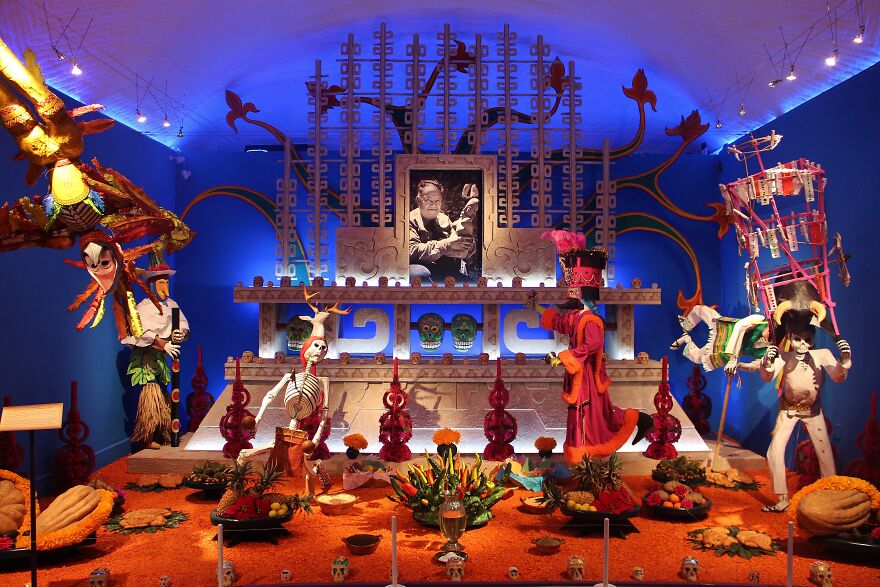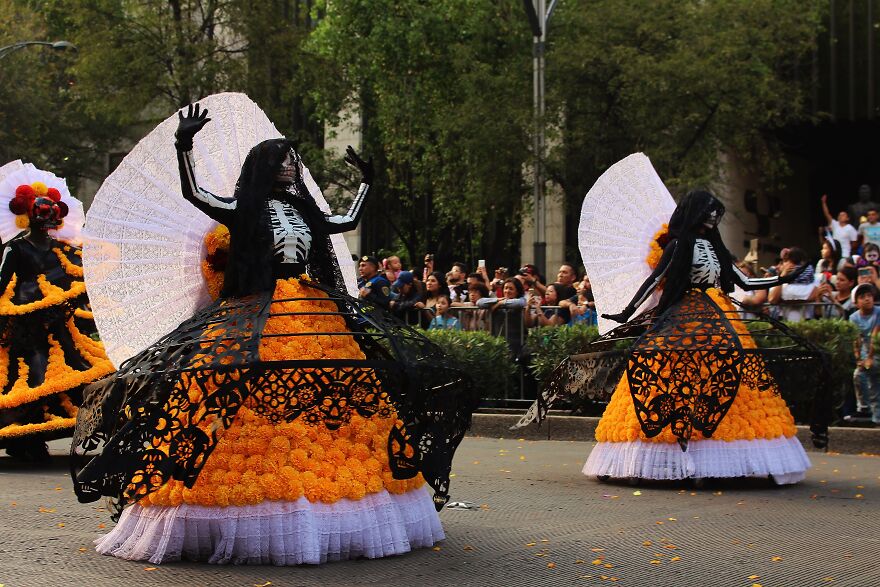The festival of the Day of the Dead in Mexico begins from October 28 to November 2 when it reaches its splendor. I live in love with this party, that is why I have visited different places where it is celebrated. This time I share some of the photos about this party.
Catrinas
To criticize the society of the 19th century, a popular engraving at Mexico was that of skulls in female gala dresses. Since then the catrina is essential in the party.
Trajineras
The day of the dead is a mixed party. The European belief that the dead return from the afterlife (Celtic) was mixed with the festivals related to the pre-Hispanic deities of death. The result was an indigenous ceremony.
Offerings
Tradition dictates that the dead are greeted with an offering. These have many variants depending on the region. In the 20th century, the people of the city began to adopt this rural tradition.
Receiving the dead
Although originally the Catholic saints were received on November 1 and the faithful departed on November 2, it is currently believed that on the 1st the children arrive and the 2nd the adults. Versions also vary by region.
Alfeñique
A traditional sweet in the offering is the alfeñique. They are sugar candies in the shape of skulls, coffins, bones or animals.
Alfeñiques
Offering
In addition to sweets, the offering generally contains water, candles, cempasuchitl flower, and food that the deceased tasted while alive. Some towns put up to 50 different dishes in gratitude to those who built our lives.
Cempasuchitl
The marigold flower (cempasuchil) is believed to serve to guide the dead from the underworld. It is important to trace a path from the entrance of the house that they can follow to the offering.
Souls arrive
There are towns where people make bonfires all night outside the houses so that the dead can see the light. At Othenco, paper balloons are thrown all day and all night so that souls can guide themselves with them.
Altars
In Huaquechula, white altars are placed in memory of those who died in the months prior to the festival. Each floor represents an existential plane: heaven, earth and the underworld.
Offering
Offering to the collector Dolores Olmedo who, after adopting the tradition at home during the 1950s, the Mexican aristocracy gradually adopted them.
Offering
Offering in memory of the stars of Mexican cinema at the home of the late film director Emilio “El Indio” Fernández.
Offering
Offering to the defunct Smyrna Dancing Club (1940s). One half recalls the black and white photographs and the other the death of the singer Juan Gabriel.
Offering
Offering for Diego Rivera representing the traditional dances of Mexico with paper skulls.
Offering
Offering to the poet Sor Juana Inés de la Cruz made with yarn.
Offering
Offering with talavera made in the streets of Mexico City.
The duel
The day of the dead also serves to create social criticism. Offerings are made to victims of drug trafficking, femicides, state crimes and in this case to HIV victims due to lack of medical care.
The party starts
Although festivals and festivals begin throughout October, culminating in the Day of the Dead, the main events fall on November 1 and 2.
Dia de muertos parade
Skulls
Almost in every corner you can see colorful skeletons representing each member of society, remembering that it doesn’t matter how, when, or where; We are all gonna die.
Diorama with skulls
El panteón
After making the offering between October 31 and November 1, the dead are accompanied back to the cemetery. On the 2nd, the whole family brings food to the pantheons to spend the night with the deceased.
The cementery
The graves are decorated for the occasion. They clean themselves, put flowers and fix for dinner. In Tecómitl people make mud sculptures with the earth from the grave. While the adult area has traditional figures, in the children’s area horses, trains, toys and all kinds of things are sculpted.
The verbena
The party continues in the cemeteries where the gathered people play music, eat and laugh accompanying their deceased.
The night
As night falls, the atmosphere becomes solemn as the souls return to the grave. Little by little the bustle dies down and the party ends.
The end
The following days the remains of the offering are distributed and eaten to share the pain of the dead. The festival ends at dawn on the 3rd when the souls have already left the earth until the following year.

 Dark Mode
Dark Mode 

 No fees, cancel anytime
No fees, cancel anytime 
























































2
0